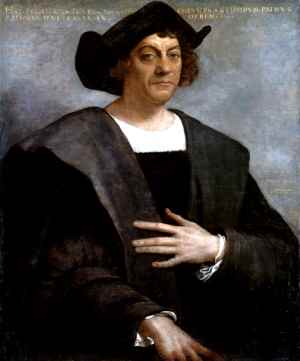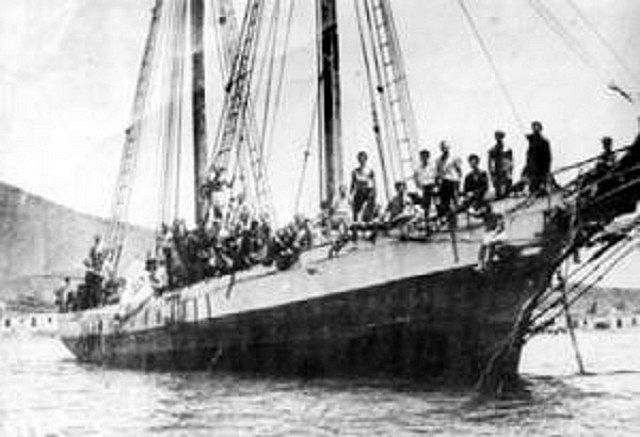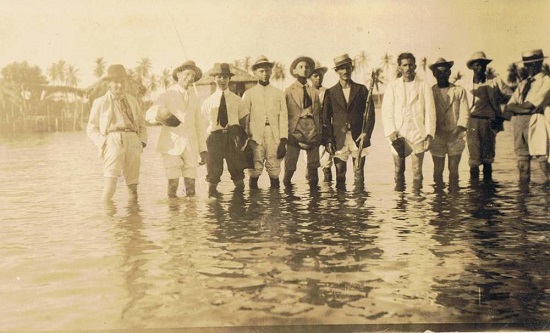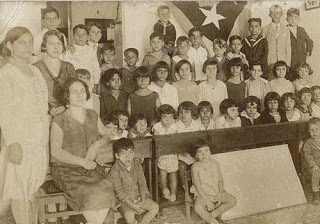Not like most the tourists visiting Tenerife and spending whole holidays without living resort, that travelers, who take private VIP tours with Tenerife Host can feel the influence of South American culture in Tenerife and some of the people say they feel Tenerife is a kind of a mix between Spain and South America. And that’s true, because there are very strong historical connections mainly between Tenerife and Venezuela, but also Colombia, Cuba, Argentina and other countries of South America.
If you take a private tour in Tenerife with Tenerife Host, you can observe that South American influence in different parts of the island. And that’s the reason why we decided to highlight a bit the history of the people moving between the Canary Islands and South America.
The conquest and colonization of the Canary Islands run more or less parallel to the discovery of America. The discovery and colonization of the Antilles by Columbus turned the Canary Islands into a privileged setting, in a kind of an experimental laboratory. Asian plants like sugarcane and banana trees were delivered from the Canary Islands to the West Indies. Canarian technicians worked in the first mill of the New Continent in Santo Domingo. The African yam brought from the Canary Islands will penetrate very soon in the Caribbean area. The same will happen with the pig, the goat, the dog, and the sheep, which, led from the Canary Islands, will spread throughout the Antilles. The Canaries were, therefore, an intermediary in the diffusion of plants and animals on both sides of the ocean. The potato will acclimatize quickly and are known from very soon exports towards Europe. As early as 1567 the potatoes already sent to Flanders. That situation will transform the island’s agriculture, becoming the food par excellence of the lower classes of society and the basis of their energy source and health. By its position and the action of the trade winds the Canary Islands became the forced passage for the Indies.

Canary Islands participated in the conquest of South America as expert guides. Between 1492 and 1506 at least 12 of the largest expeditions made the stops in Tenerife and La Gomera islands. Among them are the greatest names of the conquest, such as Columbus, Ojeda, Vespuccio, Pedrarias, La Cosa, Yáñez and Ovando. Canary had the privilege of trading with the West Indies since the beginning of the colonization of the New World. A Royal Order of 1511 simply specifies that Canarians can leave Canary Islands only with the authorization of the captain of the vessel, without any other kind of permits.

In this way, Canary Islands and its residents become an integral part of expeditions of conquest and colonization, such as Pedro de Mendoza who founded Buenos Aires in 1535 or Pedro Fernandez de Lugo who with his conquest of Santa Marta in Colombia and many others. However we can not speak of Canarian emigration strictly, but it was a basis for the movement of Canarians to the New World without the strict controls of the Spanish Monopoly of Sevilla. In the sixteenth century Santo Domingo was first and Havana later were the main destinations of emigration from Canary Islands. A migratory movement of merchants and farmers slowly developed.
From the year 1670 emigration from Canary Islands and especially Tenerife and La Gomera islands presents a massive familiar character. After a century and a half of growth there were symptoms of crisis. The lack of export of the white canary table wine, after the emancipation of Portugal in 1640, whose colonies were their preferred market, drags many Canarian families, particularly from Tenerife to Venezuela and Cuba. There was a kind of overpopulation in Canary Islands, so the Canary elite, accused of basing its privileged regime of trade with America in the smuggling of European products, begins to talk about bringing Canarian families to the empty territories of the Caribbean to avoid the loss of such trade. The occupation of Jamaica by England, the occupation of West of Santo Domingo by France, and that of the Guianas led the Crown to consider this alternative to avoid the occupation of part of Venezuela or the Greater Antilles. The Royal Decree of 1678 was agreed upon with the Crown, by which 50 families were to be transferred to such places by the shipping companies for every thousand tons of commerce in exchange for not paying the damage tax. However the goal was to obtain a privileged company that will never come. Until the Regulation of the Canary-American trade of 1718 the Crown does not assume the real costs of that transfer and foundation of new towns. That is why the promoters of such initiatives have been generally rich private Canarians in exchange for privileges, although a majority of the emigrants to Cuba and Venezuela have been doing so on their own account.

The irruption of cocoa as the export product and the pacification and control of Los Llanos favor the definitive installation of canary families in the central region of Venezuela. In Caracas and La Guaira at the end of the seventeenth century an important colony began to be established. It is estimated that they represent more than 90% of marriages of white immigrants and 16% of the total, a number that is much greater, if one considers that the great majority married and had children before emigrating. Subsistence agriculture and livestock farming lead them to found villages in the highlands of the Caracas Valley such as Los Teques, Macarao, San Antonio de los Altos or La Vega. Fruit trees such as quince or peach and crops such as corn or cassava spread them everywhere. They spread the cult of Candelaria in every corner – visiting Tenerife, don’t miss Anaga Mountans & Jungle private VIP tour or even budget Anaga & Two Capitals bus sightseeing tour to visit Candelaria. But they not only contribute to agriculture, they constitute most of the store keepers and merchants. Its presence is located from the top with governors like Ponte and Hoyo or Bethencourt and Castro to mulats and slaves, of service or of plantation. Even in the fine arts you can speak of an authentic Canarian school that puts its stamp on sculpture, painting or casting in Venesuela.

As the result of emigration whole villages of Tenerife like Buenavista, El Sauzal or Vilaflor became empty themselves. You can even find the same village names not only in the Valley of Caracas, in the Yaracuy they found San Felipe and they impel a cacao agriculture carried out mainly by free men. In Los Llanos they founded the spearhead for the colonization of San Carlos Cojedes, which later culminated with that of Calabozo, opening the way to external penetration, which will culminate in the second half of the XVIII. In Aragua they extend by La Victoria and Maracay. From San Sebastián de los Reyes they project towards Villa de Cura and San Juan de Los Morros. In Barlovento, the colonization of Curiepe and Panaquire began in the second half of the eighteenth century with the Guapo and Río Chico. The same is true in Barquisimeto and Guanare. In Maracaibo militiamen and families are displaced to colonize their interior. But it is only effective when a private entrepreneur undertakes with them the one of Perija. In the East they were taken to Cumana and Cumanacoa, but they remain there, because their interior colonization fails. Only the Concepcion del Pao is successful. The same thing happens with Upata, than to leave after being set afire by British attacks. Only in the second half of the eighteenth century can we speak of a more effective colonizing expansion.
This boom, with the traffic with Mexico and smuggling as a spearhead, soon collides with the Crown that the Guipuzcoan Company creates to counteract it. The Canarians were struck by their control, which essentially harms small farmers. The rebellion exploded in 1741 in San Felipe Yaracuy and has its most striking expression in 1749 with that of the heir Juan Francisco de Leon. Its defeat is the most serious warning to the peasants who see closed their conversion into “hacendados”. Inner colonization was their only alternative. It is the time in which the emigration of men predominates in Los Llanos or Oriente to new lands like Chaguaramas, Ospino or San Jaime in Los Llanos or New Palencia or the Piragua in the East.
The success of the interior colonization leads back to the end of the eighteenth century, on the eve of independence, to the rebirth of family emigration. Coffee is your incentive. Independence, an inescapable consequence of the emptiness of the Napoleonic invasion, was first and foremost a social war in which elite from Canary Islands and the simple people expressed themselves as Venezuelans, because they were Creoles for them. Although at first all social spectres supported it, its oligarchic character showed the disaffection of the lower classes who sympathized with the counterrevolution. But with the Llaneros under Paez, they returned to the cause of independence, like the whole of the Venezuelan lower classes.

Canarian emigration to Cuba spread from the last third of the seventeenth century in the province of Havana and to a lesser extent in the central region of the island. Thanks to tobacco, they transform the island economy and mark the beginning of a stage of economic growth marked by exports. In 1693 with Canarian families Matanzas was born. The canaries were not dedicated exclusively to the cultivation of the tobacco, they explored small orchards to supply maloja (food for the cattle) or vegetables. A significant volume of small commerce was in their hands. The traffic with Canary Islands was the starting point for the formation of island mercantile elites that were integrated into the upper class of Cuban society. However, most struggle to gain access to land and to hinder the development of the landlord privileges of Cuban landowners, such as those of Bejucal in 1713 or Our Lady of the Rosary in 1731. An essential jolt in that struggle would be Santiago de Las Vegas, constituted in stately villa in 1775, after a long dispute. The Crown wanted to monopolize tobacco through the state monopoly. In 1717 the Estanco was established, against which the tobacco planters opposed with riots. The repression reached its peak in 1723 with more than 50 people killed.
The emigration of people was predominant in the second half of the XVIII because of the greater difficulties of access to land and the lower profitability of tobacco cultivation. The liberalization of the slave trade in 1789 provided its massive introduction, favored by the rebellion of slaves in Haiti. This qualitative change coincides with a serious economic crisis in the Canary Islands. Although between 1783 and 1791 grew the number of tobacco planters, the situation changed radically. Those who cultivated the lands by census and by lease were obliged to leave them and to go to more distant areas like Pinar del Río, which will become the famous Vuelta Abajo, the tobacco center par excellence. The herds were transformed into plantations. The clash between hacendados and cultivators was evident in Güines and San Antonio de los Baños. A considerable part of the cultivators would be expelled from their lands, to be replaced by slave labor in the new sugar plantations.
In the next articles we will continue the explanation how strong historical connection there is between Canary Islands and different parts of South America.